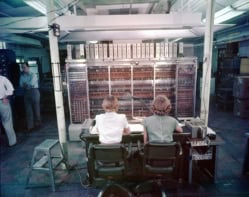By Michael Banks in Washington, DC
Last week a hiccup from the Sun resulted in travel misery. Flights that were due to travel over the poles had to be rerouted when material from a solar flare was expected to impact on the Earth’s magnetosphere.
The result would be a geomagnetic storm and the airlines couldn’t risk their craft suffering electrical interference that the storm – the strongest for four years – would bring. It resulted in frustrated passengers and added costs for airlines.
You probably do not think that space weather would affect your daily life, but a huge coronal mass ejection (CME) from the Sun would have untold consequences on Earth, potentially damaging electrical transmission lines that would result in power outages.
A CME releases a plasma of electrons and protons into space and the shock wave of the traveling plasma causes a geomagnetic storm.
Today at the 2011 annual American Association for the Advancement of Science meeting in Washington, DC a panel of distinguished scientists spoke about the effects of space weather and what to do to mitigate its effects.
Jane Lubchenco, head of the National Oceanic and Atmospheric Association, told delegates that space weather is a “serious concern”. “We are going to be seeing more space weather”, says Lubchenco. “10 years ago the world was a different place, fewer aircraft were flying, now space weather is everyone’s business.”
John Beddington, chief scientific adviser to the UK government, said that countries need to invest in “predication facilities” and learn how to characterize space weather better so when it does arrives we know how to deal with it.
Unfortunately, mitigation at the moment mostly means turning off transformers until the storm passes. This would mean a temporary blackout. However, the alternative is the possible destruction of infrastructure that would take years to replace.
As Lubchenco noted about future solar storms: “it’s not a matter of if, but when and by how much.”



